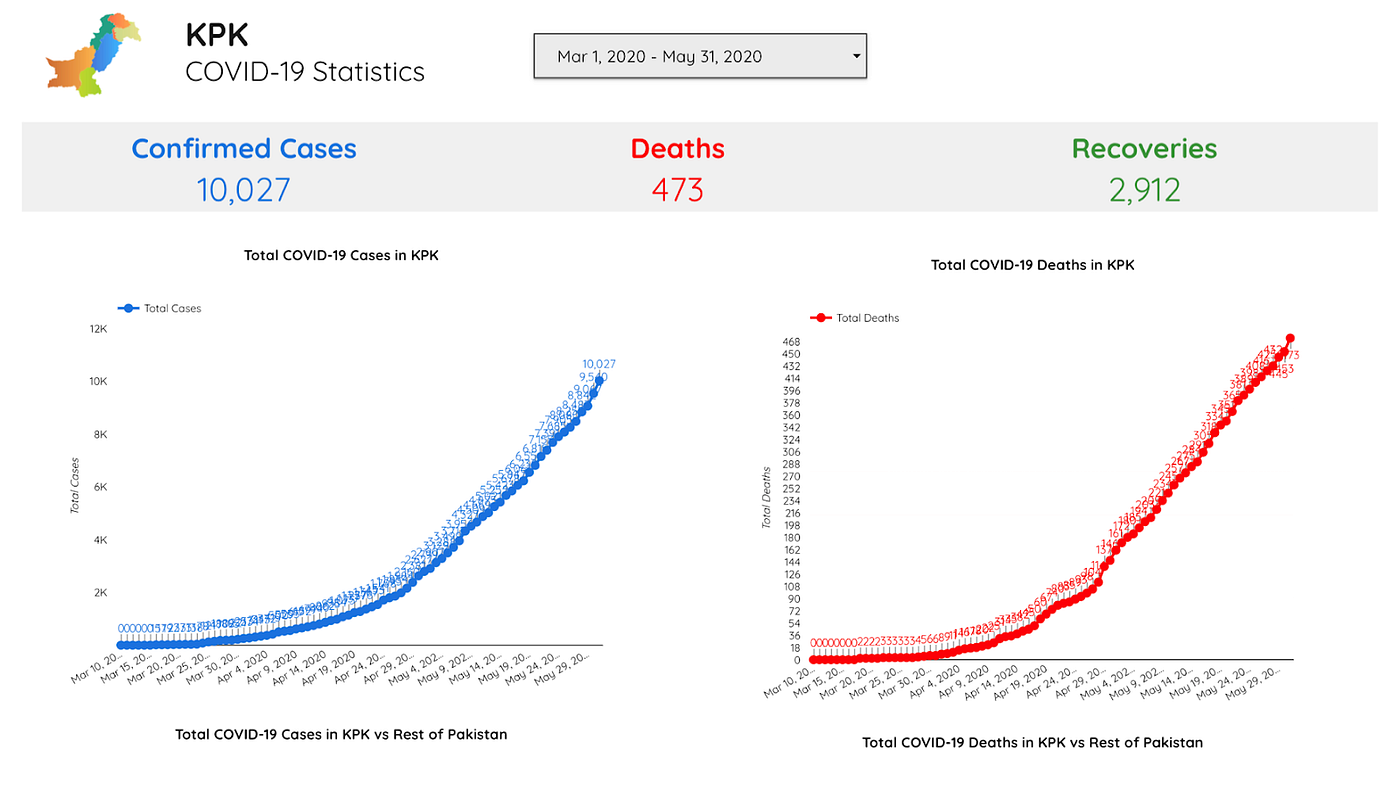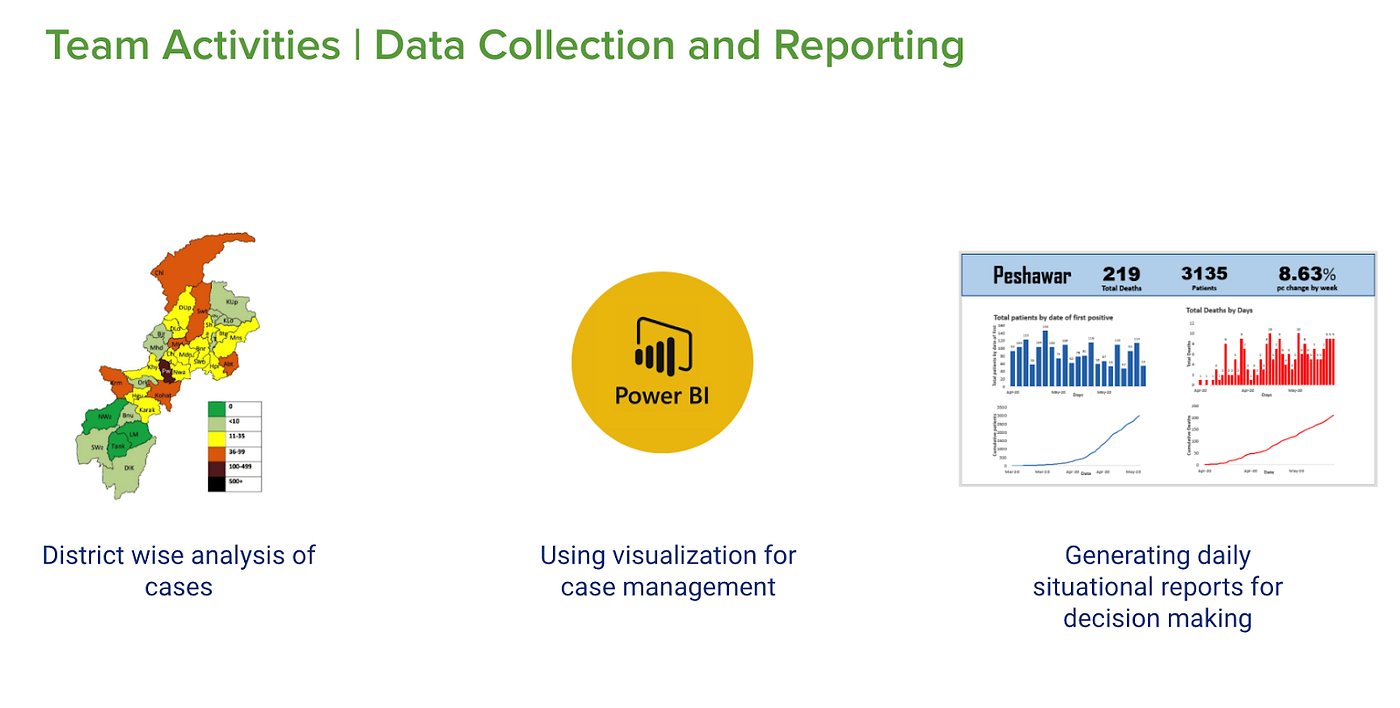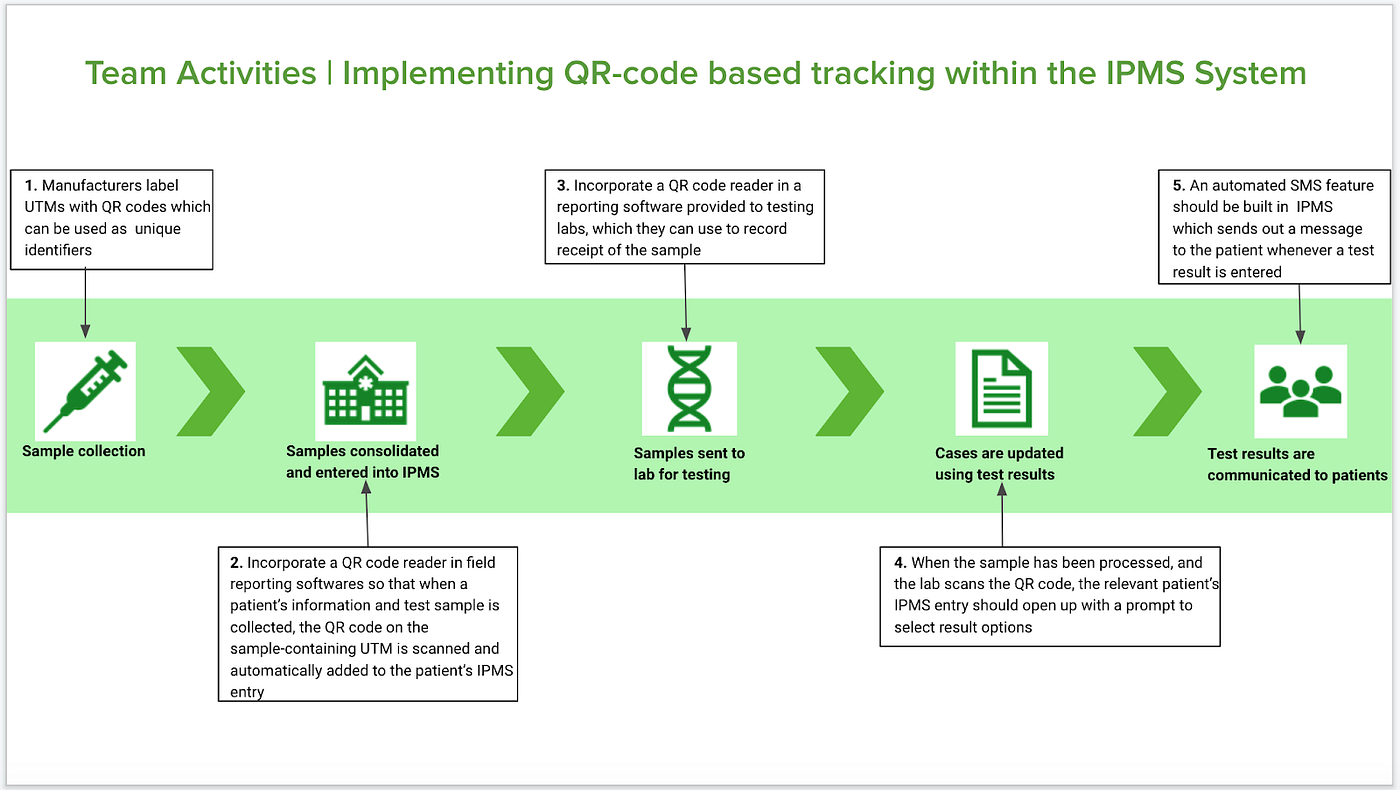
Back in March, shortly after the first confirmed case of Covid-19 in the Khyber Pakhtunkhwa province, cases started to increase rapidly. To counter this, the Health Department KP quickly developed mechanisms to track patients and potential infection hotspots via the Integrated Performance Management System (IPMS). In May, Code for Pakistan’s Fellowship team, in consultation with our program partners The World Bank Group and KP IT Board, formed a team of data scientists to provide support with caseload management and data analysis on the IPMS platform. Between May and November 2020, the team assisted the Health Department of KP by performing surveys with data entry operators, conducting research for smart lockdown policy making and developing tools to improve patient tracking and caseload management. In this blog post, we share the interventions the IPMS support team worked on and the ways in which citizens and government collaborated to address unprecedented challenges posed by Covid-19.
Overview
On February 26 2020, Pakistan confirmed its first two cases of the novel coronavirus. Shortly afterwards, cases were detected in all major cities across Pakistan. By mid March, almost 300 cases were recorded in all parts of the country with 2 deaths reported in the Khyber Pakhtunkhwa province. By the end of March the entire country went into lockdown. The Federal Government and the provincial governments published strict guidelines to counter the spread of the virus while the health apparatus of the country geared up to cope with the influx of patients. In an effort to contain the spread of the virus, Pakistan established the National Command and Operation Center (NCOC). The NCOC worked on contact tracing, testing, and smart lockdowns to contain the spread. Several patient tracking dashboards were developed at the federal and provincial levels to ensure that suspected patients were detected and isolated.
Contact Tracing Explained
To contain the spread of the coronavirus, contact tracing played a crucial role. The WHO defines contact tracing in three steps:
Identification: Once someone is confirmed as infected with a virus, contacts are identified by asking about the person’s activities and the activities and roles of the people around them since the onset of illness.
Listing: All persons considered to have contact with the infected person should be listed as contacts.
Follow-up: Regular follow-up should be conducted, with all contacts instructed to monitor for symptoms and test for signs of infection.
This meant that patient tracking dashboards needed to become robust in data analysis and predicting trends to ensure that infection hotspots could be identified and people could be put in precautionary quarantines to limit the further spread of Covid-19.
Situation in Khyber Pakhtunkhwa
By May, the situation in KP looked dire. As per the official Covid-19 dashboard, there were 10,000 confirmed cases in the province with 473 people dead.

The Health Department of KP had developed mechanisms to track patients and potential infection hotspots via the Integrated Performance Management System (IPMS). There were over 150 access points across the province where patient information was entered into the system for contact tracing and trends analysis. But with the rate of infections increasing rapidly, this exercise was becoming challenging.
The Fellows
Four data scientists were recruited on May 8 after one week of rigorous screening and interviews to support the Health Department on the IPMS workstream. Over the next six months, the talented Fellows, Asad Aftab, Maheed ur Rehman, Haseeb Jan and Shah Hassan worked to continuously improve the monitoring/caseload management mechanism and analyze the data compiled in the system to provide insights to the minister on a daily basis.

Team Activities
Improving the data entry process
The IPMS team immediately got to work on preparing daily situational reports (SITREPs). These reports were crucial in keeping the Health Minister informed with a daily snapshot of the on-ground situation with statistical figures of daily infections, fatalities and recoveries in the entire province. With contact tracing being the most important activity in containing the spread of the virus, the team was tasked to work on data visualization using Microsoft Power BI to identify and isolate infection hotspots.

The team also worked on improving the data entry procedures on the IPMS platform. Data was coming in from over 150 access points across the province, which included labs, hospitals, health units and quarantine centers in KP. The Health Department relied on field data entry operators, a group of volunteers across different districts of the province to add data on a daily basis. These field operators were facing issues in data entry procedures and found problems with the user experience of the IPMS platform. The support team surveyed and interviewed the district field data entry operators and discovered that they had a two-step process for data entry; the data was first stored manually and then fed into the IPMS platform. The team redesigned and simplified the data entry form in an effort to facilitate the data entry process for the field operators and reduce the amount of time it requires to add data.
Researching on and influencing policy for the tourism sector
The Fellows were also asked to conduct a survey on the impact of Covid-19 on the tourism sector of Abbottabad. The team conducted the survey covering different aspects i.e tourist flow, population density and loss to KP tourism sector overall. Stakeholders associated with the tourism sector were also interviewed to take feedback on policy making and devise SOPs to reopen the sector.

The survey was crucial since tourism is one of the most important sectors of the local economy of Pakistan and analysts predicted that KP’s tourism sector alone could face a loss of $20 million in revenues and could slash around 260,000 formal jobs due to Covid-19 related lockdowns. The information collected by the IPMS team was significant in aiding the government in developing policies to address the impact of Covid-19 on the tourism sector. The findings enabled the government to implement a smart lockdown policy, curtailing tourism in hotspot areas to ensure the safety of tourists and the local population while allowing the sector to reopen in locations with low virus activity, thereby providing some relief to the tourism industry and the livelihoods dependent on it.
Reducing the backlog

Midway through the six-month support project, the Fellows identified that the IPMS dashboard was facing a backlog. The support team was tasked to minimize this backlog by developing new mechanisms for patient tracking and data entry into the IPMS dashboard. The support team took inspiration from the success of the New Zealand Covid Tracer App and decided to implement QR-code-based tracking within the IPMS dashboard. The team conducted a detailed study, exploring technical challenges and the need for hardware and software interoperability, eventually developing a QR-code generator app, which could print QR-codes on demand and assign each individual case with a unique QR-code which could be easily tracked within the IPMS system. The app was handed over to the IPMS team and the pilot was launched successfully in October.

We are incredibly proud of the work the Fellows have done to support the government at a critical time. Kudos to Asad Aftab, Maheed ur Rehman, Haseeb Jan and Shah Hassan!
Message from the IPMS Support Team
“We would like to request all our readers to practice safety and health precautions, and ensure that they continue to wear masks, avoid large gatherings and sanitize their hands whenever possible. Together we can combat the spread of the virus and ensure everyone’s safety.”
Written by Ibraheem Saleem
Ibraheem is the Program Manager at the KP Government Innovation Fellowship Program. He comes with an entrepreneurial background, with a keen interest in Social Impact Ventures, Civic Innovation, and Community Mobilization through technology.